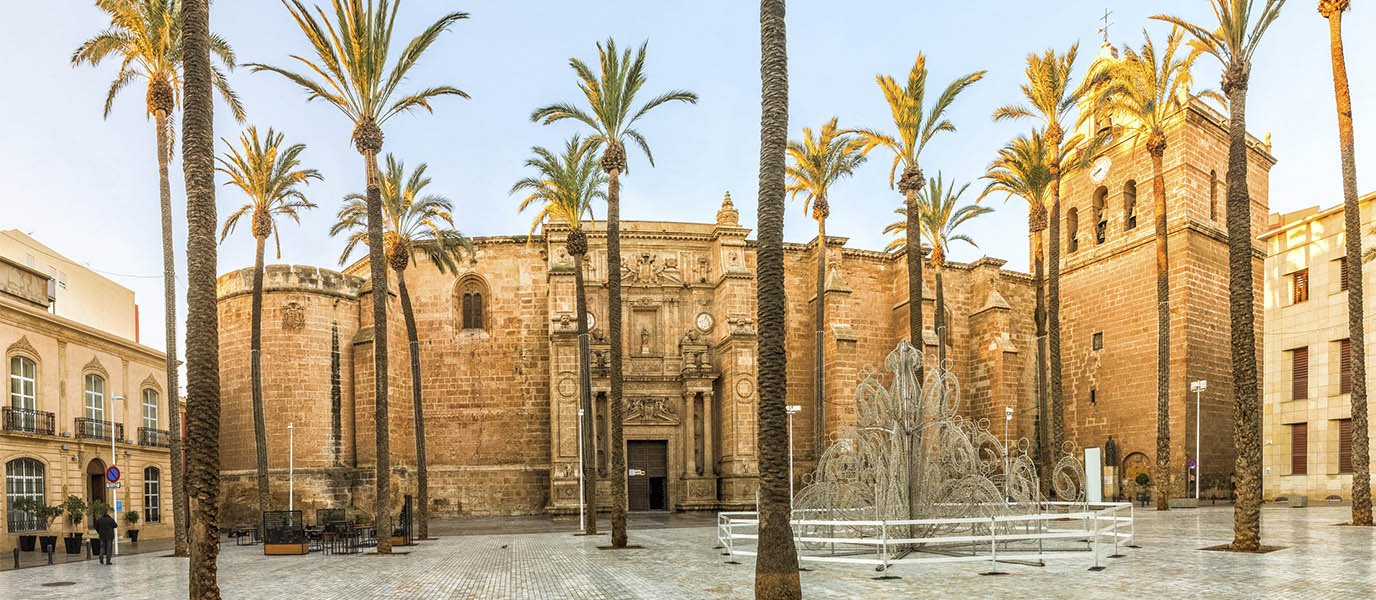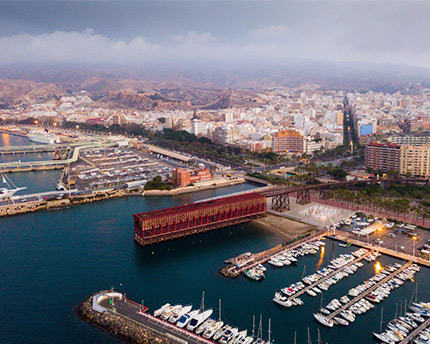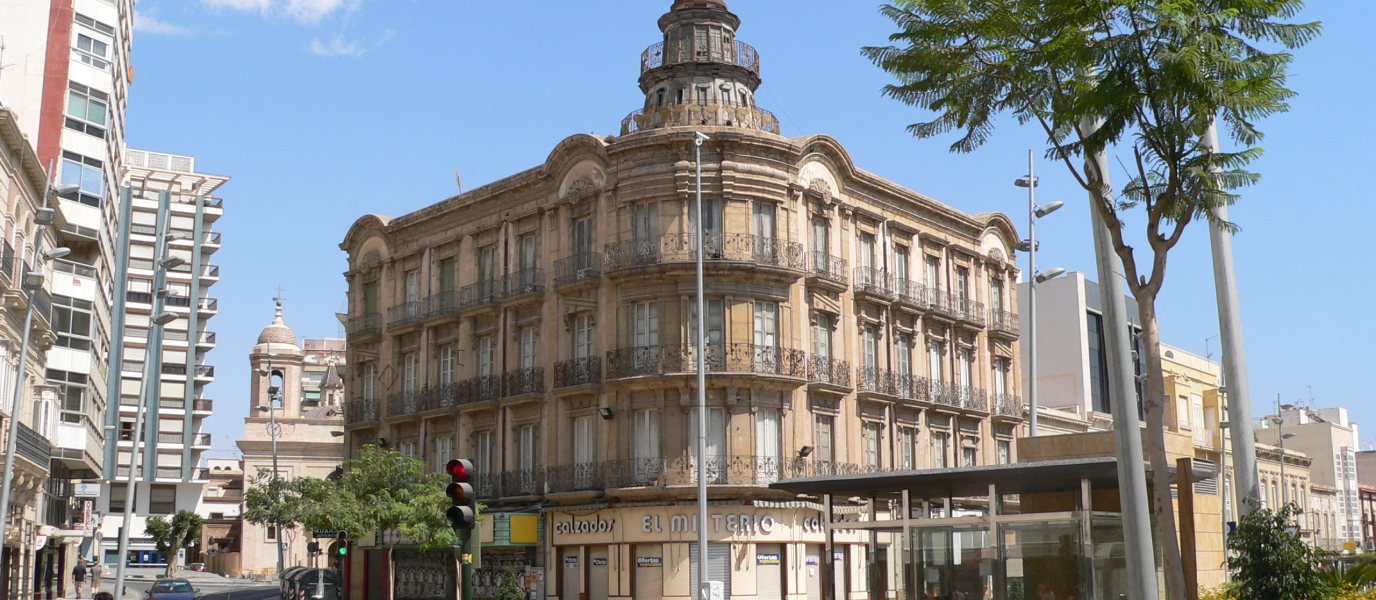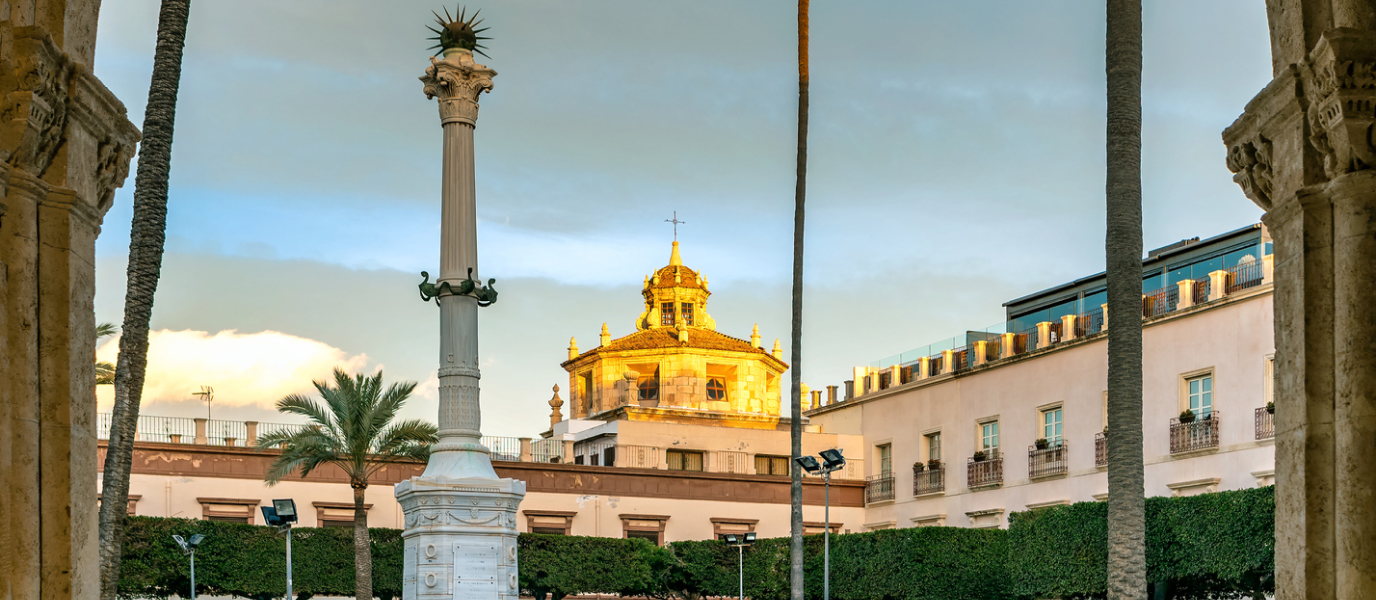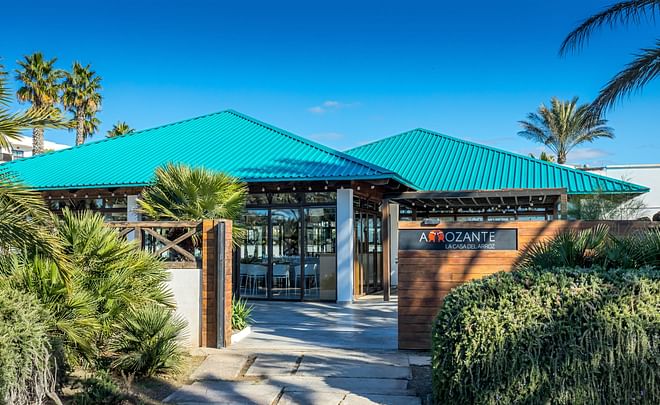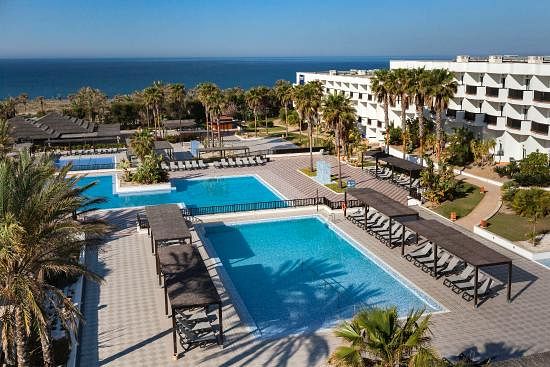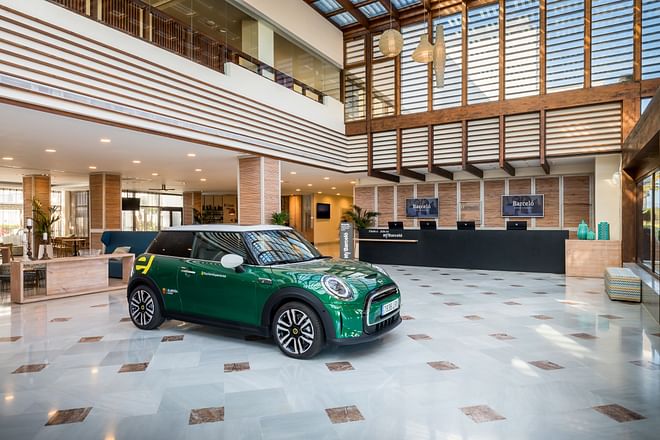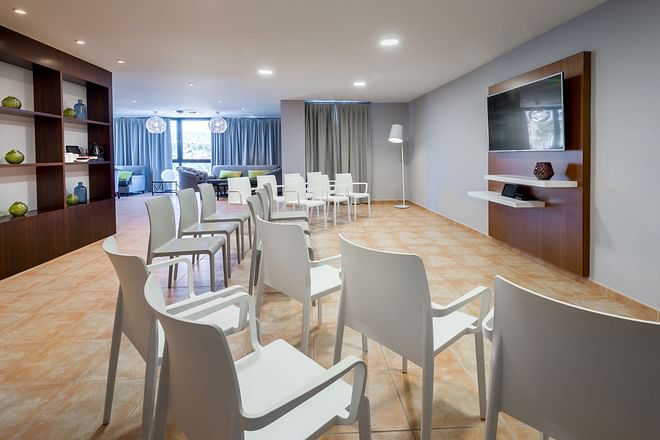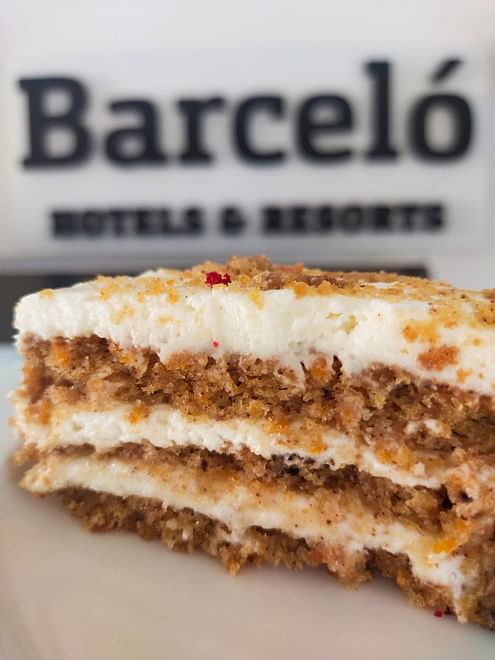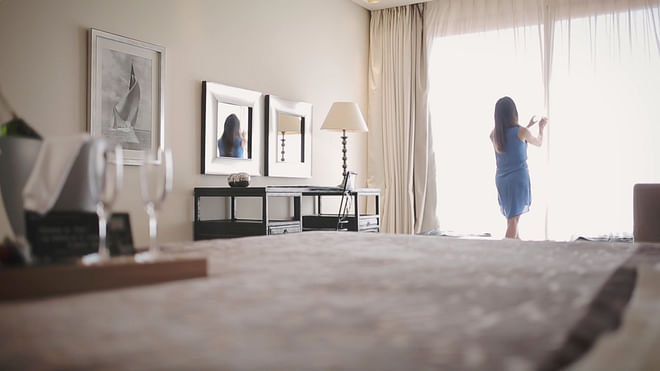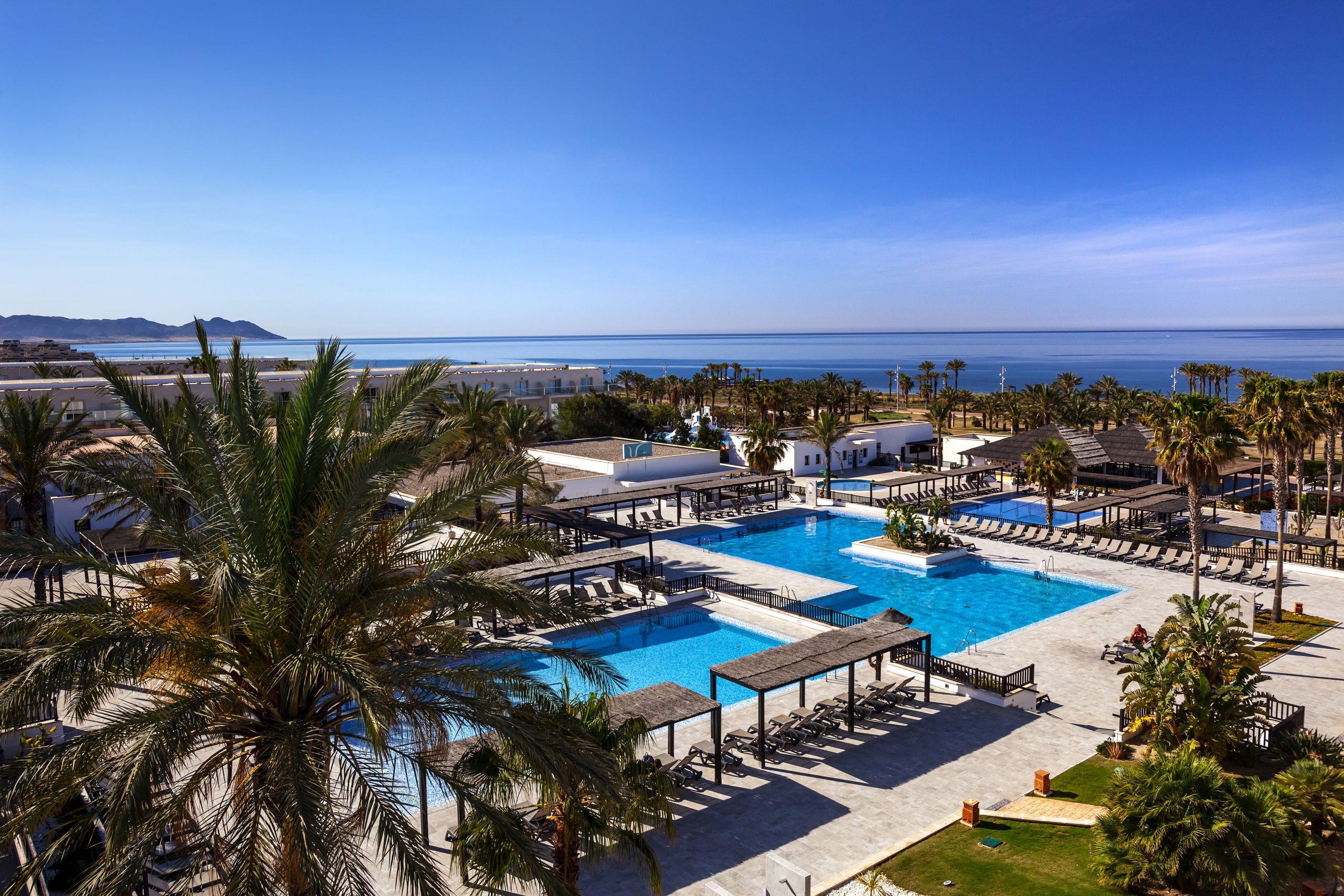The province of Almeria is a popular tourist destination for its gorgeous beaches and striking desert-like landscape, including the Parque Natural Cabo de Gata-Níjar. The region has so much more to offer than meets the eye. The capital is a port city that harbours an astounding wealth of culture. Come discover this tiny Andalusian coastal enclave steeped in history.
The Alcazaba: the great fortress of Almeria
The number 1 must-see is without a doubt the Alcazaba. This emblematic landmark from the Middle Ages is one of the architectural jewels of Muslim Spain. It was built by the Caliph Abd-ar Rahman III, founder of the city, in the 5th century. The complex includes the fortress, a castle and 1,400 m-long fortified wall which offers spellbinding views of the city and coastline. Beat the summer heat by visiting this stunning sight early in the morning, or enjoy the views from the fortified wall at sundown at any time of the year – it’s the perfect plan for a romantic getaway.
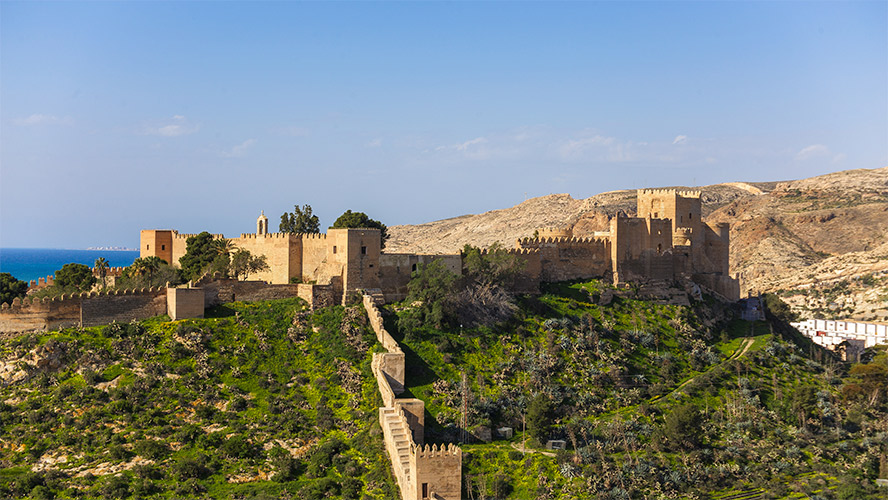
Plaza de la Constitución
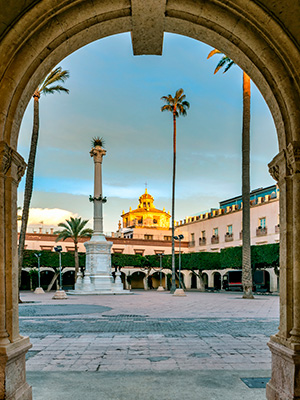
Before you begin to meander through the city centre, head to Plaza de la Constitución. The town hall and the Tourism Office are located in this popular square in the old town that once housed a souk. Admire the Martyrs of Liberty Monument in the centre of the square and pay a visit to the Heritage Interpretation Centre to discover the fascinating history of this city that dates back a thousand years. Admission is free.
You can also savour delicious local traditional food such as pescaito frito (fried fish) at some of the city’s top bars and restaurants, such as the renowned Casa Puga.
The fortified Cathedral
Take the time to stroll the streets lining the old quarter as you make your way to the handsome 16th-century Cathedral of Almeria presiding over a palm-tree-fringed square.
This is one of the city’s crown jewels of historical and artistic heritage. It was built as a fortress to protect the population from attacks and is one of the few churches in Spain to have been designed in such a way. It is adorned with Gothic, Renaissance, Baroque and neoclassical features.
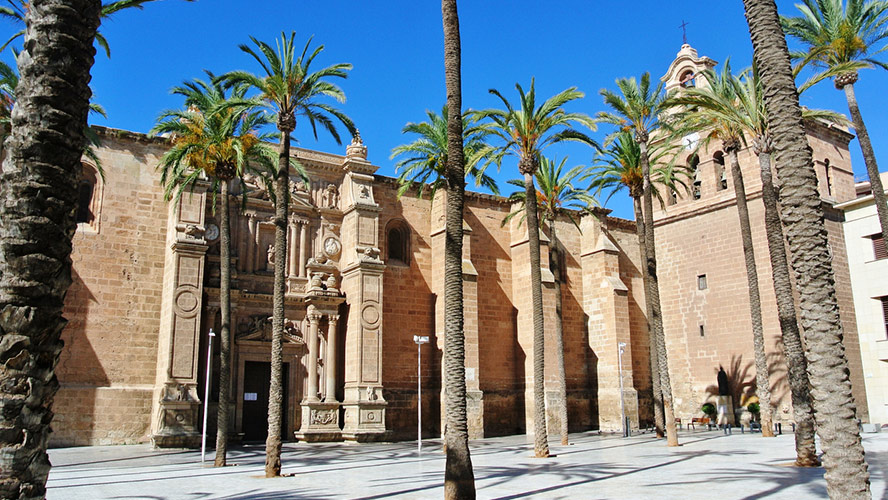
The underground Spanish Civil War refuge
Almeria is one of the last Republican strongholds during the Spanish Civil War. Underground refuges were built to protect the population from the incessant air strikes. Today, these tunnels are a fascinating relic of a key chapter in Spanish history. The tunnels cover more than 4 km and could provide shelter for up to 40,000 people. There is even an operating theatre! A visit to these tunnels is a unique opportunity to get a glimpse at the true horrors of war.
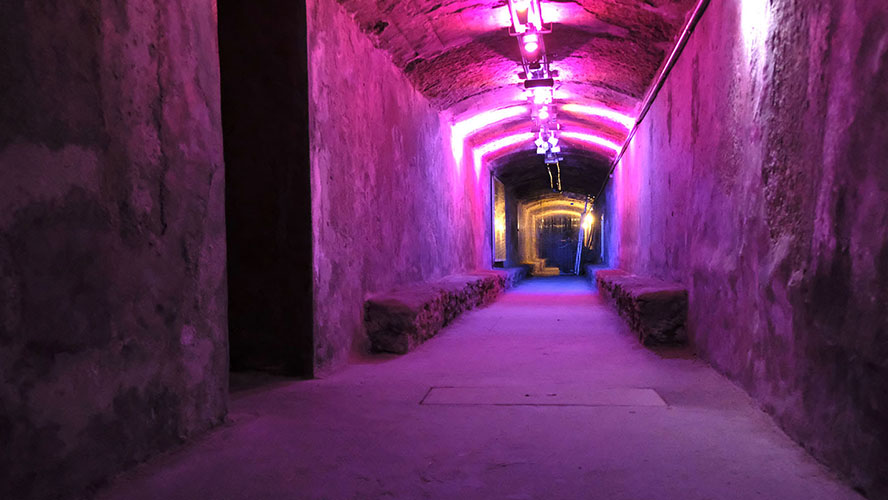
The fantasy of Casa de las Mariposas
Declared a heritage site in 1991, Puerta de Purchena is one of the most emblematic squares in the city. It is presided by the grandiose, 20th-century Casa de las Mariposas, or House of Butterflies, designed by Trinidad Cuartara. The most striking feature of this modernist building is the almost life-like butterflies that adorn the building’s headframe. The square also houses a statue of Nicolás Salmerón and El Cañillo fountain – two indispensable landmarks of the city. The square is especially pleasant at night time.
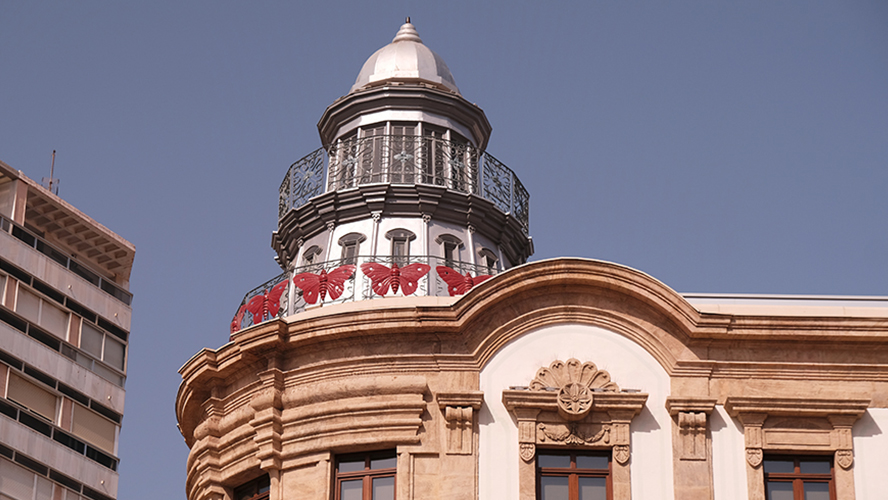
The best from the land and sea under one roof
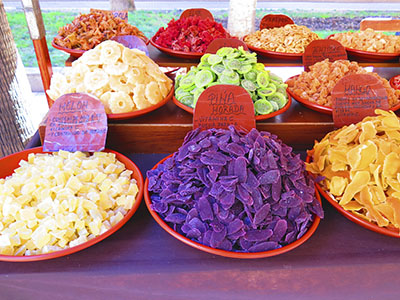
City markets are an excellent way to discover the pulse of a city and the Mercado Central of Almeria is no different. The market is housed in a stunning cast-iron building designed by Trinidad Cuartera and located just a stone’s throw away from Puerta de Purchena.
It’s the ideal place to pick up yummy regional delicacies.
Museo de Almería
If you are interested in discovering the millennium-old history of the region, head to Museo de Almería. Not only does this museum have some incredibly interesting exhibitions, the building itself is a beautiful contemporary architectural achievement and has won several awards.
The Belgian engineer Luis Siret is considered by many as the father of Prehistory in Almeria. He discovered the archaeological sites of Los Millares and El Argar, and amassed a significant collection of artefacts that he ended up donating to the museum – much of which make up the permanent collection. The contemporary displays seem to accentuate even more the ancient artefacts on display.
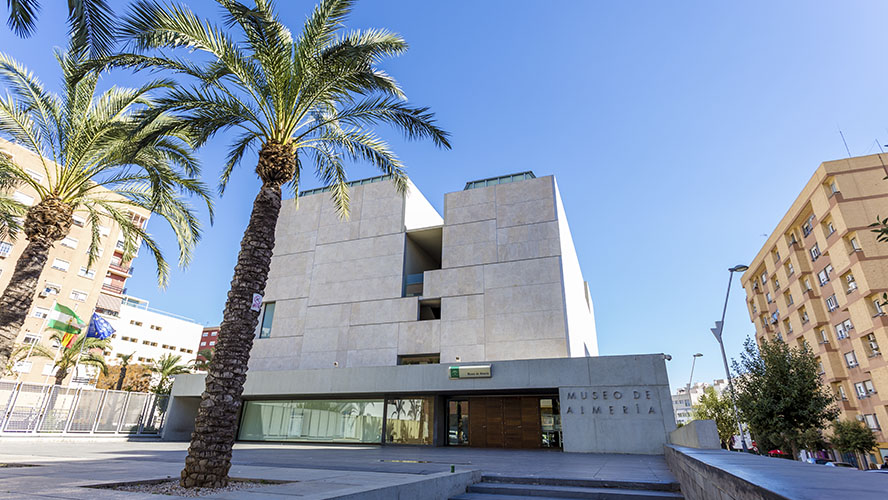
The Cable Inglés
The city dwellers are truly divided in their views of the Cable Inglés, or English Pier. Some hate it while others love it. Either way, nobody can deny the pier’s unique design
It was built at the beginning of the 20th century and is another example of the iron-cast architecture that Gustave Eiffel popularised. It stopped being operational in the 1970s but instead of being torn down, it was decided it was an invaluable monument of Almeria’s mining history.
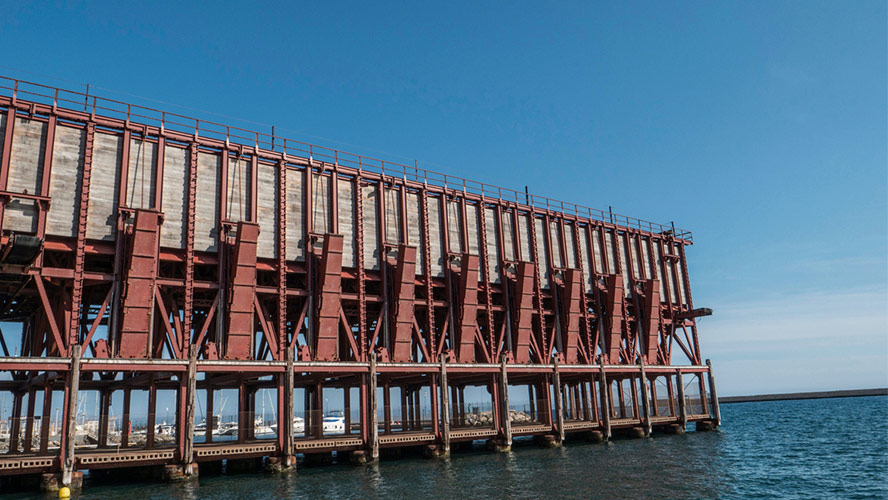
Parque de las Familias
Travelling with children means including activities that will keep them interested and occupied, and the Parque de las Familias in Almeria will do just that. Located on Avenida del Mediterráneo, this extensive green space is about the size of fifteen football fields. It is the largest play park in all of Andalusia for children. Each play area represents a different part of Almeria, such as the Alcazaba and Cabo de Gata Natural Park. There is an enormous fountain with flashing lights, and several different establishments to grab refreshments.
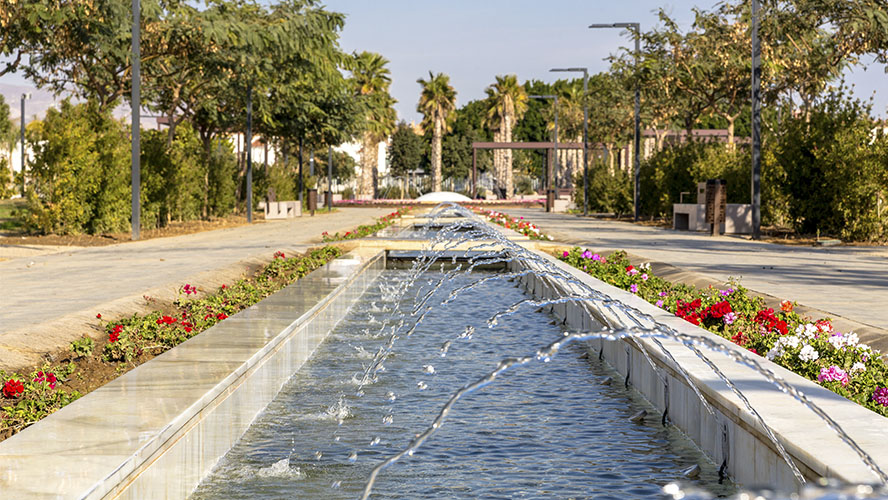
The urban beach of Playa del Zapillo
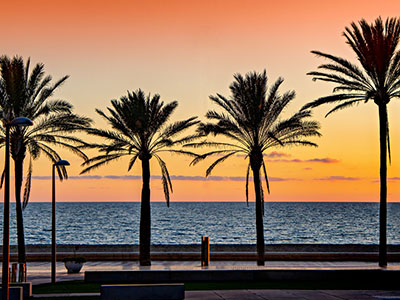
The 2-km long, sandy urban beach of Playa del Zapillo is located just a short walk from the city centre and is one of the Almerian’s favourite beaches. It can get pretty busy in the summer when everyone is looking to beat the heat.
The city also has a lovely seaside promenade lined with ice cream shops, bars and restaurants. Grab a table at El Portón de la Bahía to enjoy scrumptious fish, and seafood tapas and dishes.
Playa del Palmeral
Playa del Palmeral lies at the end of Playa del Zapillo and, although it is quite popular, it is slightly less busy because there are no beachside bars.
The water tends to be calmer because of the presence of a breakwater, making it an ideal spot for children.





























































